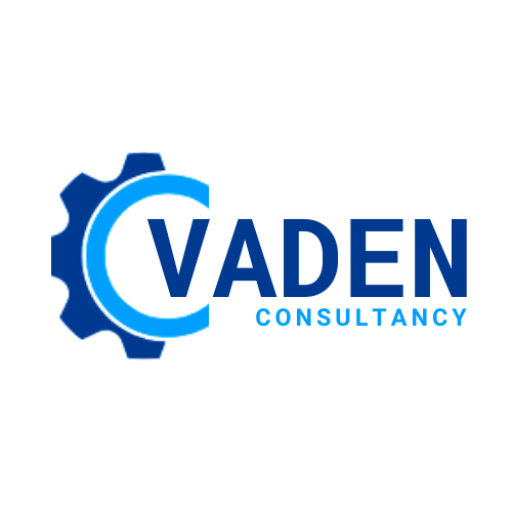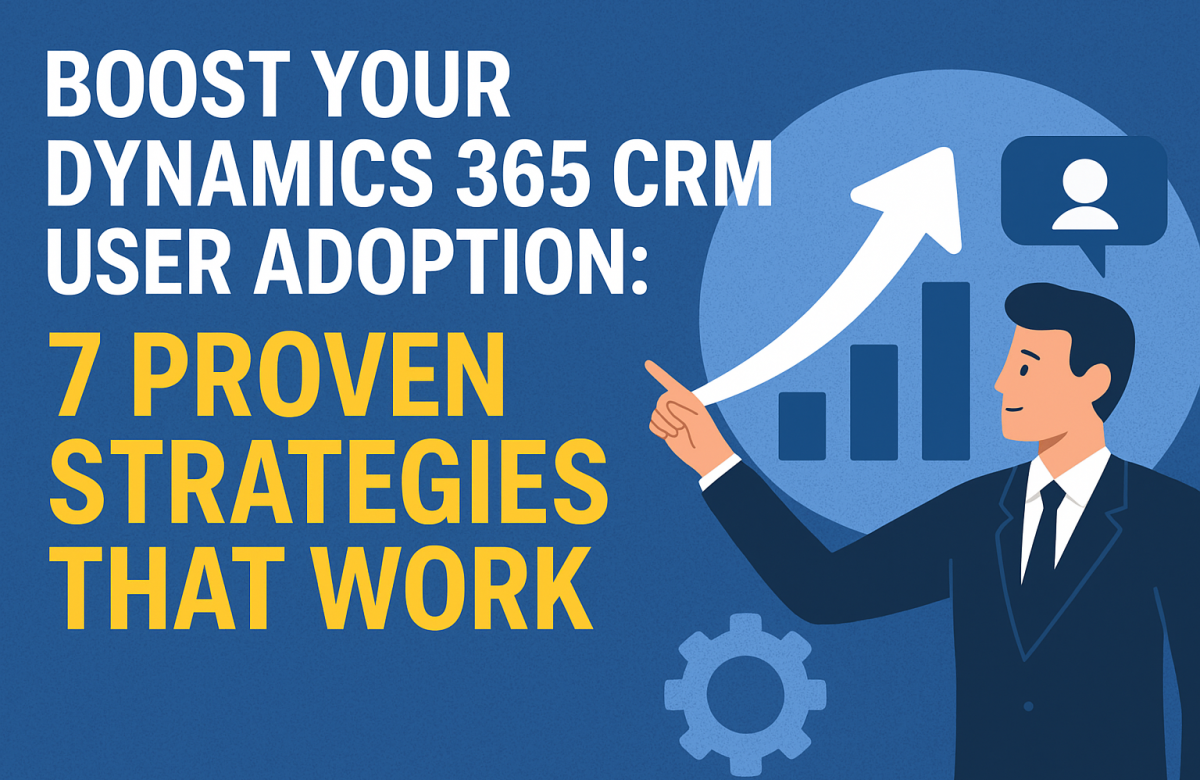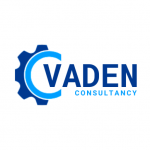Boost Your Dynamics 365 CRM User Adoption: 7 Proven Strategies That Work
You’ve invested in Microsoft Dynamics 365 CRM, configured it perfectly, and rolled it out to your team. But here’s the hard truth: if your users aren’t actively engaging with the system, you’re not getting the return on investment you expected.
Low user adoption is one of the biggest challenges organizations face after implementing a CRM system. When team members avoid using the platform or enter incomplete data, your dashboards become unreliable, your forecasts lose accuracy, and your business decisions suffer.
At Vaden Consultancy, we’ve helped numerous organizations transform their CRM adoption rates from struggling to thriving. In this guide, we’ll walk you through practical, actionable steps to track and improve Dynamics 365 CRM user adoption in your organization.
Why CRM User Adoption Matters
Before we dive into the “how,” let’s understand the “why.” Poor CRM adoption creates a domino effect across your entire organization. When sales reps skip updating opportunities, managers can’t forecast accurately. When customer service agents don’t log interactions, your team loses valuable context for future conversations. When marketing teams can’t access complete customer data, campaigns miss their mark.
Strong user adoption means your CRM becomes a single source of truth that everyone trusts and relies on. It transforms from “just another tool” into a strategic asset that drives growth.
Step 1: Establish Your Adoption Baseline
You can’t improve what you don’t measure. The first step is understanding where you currently stand with CRM adoption. Start by gathering key metrics:
Login Frequency: How often are users accessing the system? Daily active users versus monthly active users give you a clear picture of engagement levels.
Feature Utilization: Which modules and features are being used? Are teams leveraging workflows, reports, and dashboards, or just the bare minimum?
Data Quality: How complete and accurate is the information being entered? Empty fields and outdated records signal disengagement.
License Utilization: Are you paying for licenses that sit unused? Inactive accounts represent wasted investment.
Most organizations are surprised by what they discover during this baseline assessment. You might find that 30% of your licenses are barely touched, or that users are only using 20% of available features.
Step 2: Identify Adoption Bottlenecks
Once you know your baseline metrics, dig deeper to understand why adoption is lagging. Common bottlenecks include:
Complexity Overload: If your CRM feels like navigating a maze, users will find workarounds or simply avoid it. A Dynamics 365 CRM Consultant can help simplify interfaces and remove unnecessary complexity.
Insufficient Training: Many organizations provide one training session during implementation and expect users to remember everything. People learn at different paces and need ongoing support.
Lack of Relevance: When users don’t see how the CRM helps them do their job better, they won’t use it. The system needs to solve real problems, not create new ones.
Poor Data Migration: If the CRM launched with incomplete or inaccurate historical data, users lose trust in the system from day one.
Talk to your team. Conduct informal interviews or quick surveys to understand their pain points. This feedback is gold for improving adoption.
Step 3: Implement Continuous Monitoring
Tracking adoption isn’t a one-time activity. You need ongoing visibility into how your team uses Dynamics 365 CRM. Consider implementing monitoring tools that provide:
Real-Time Activity Tracking: See who’s logging in, what actions they’re taking, and where they’re spending time in the system.
User Performance Analytics: Identify top performers and understand what behaviors drive success. These insights help you create best practices for the entire team.
Custom Dashboards: Visualize adoption metrics in ways that matter to different stakeholders. Sales managers need different insights than IT administrators.
Automated Alerts: Get notified when adoption metrics drop below acceptable thresholds so you can intervene quickly.
Many organizations leverage specialized tools designed specifically for Dynamics 365 that offer these monitoring capabilities without requiring extensive Dynamics 365 CRM development work.
Step 4: Provide Targeted Training and Support
Generic training doesn’t work. Different user groups need different types of support:
Role-Based Training: Sales representatives need different skills than customer service agents. Tailor your training to specific workflows and use cases.
Microlearning Modules: Instead of marathon training sessions, offer short videos and quick guides that users can access when they need help.
Champions Program: Identify enthusiastic users in each department and train them to become CRM champions who support their colleagues.
Just-In-Time Support: Provide contextual help within the CRM interface so users can get answers without leaving the system.
At Vaden Consultancy, we’ve found that ongoing support dramatically outperforms one-and-done training. Plan for monthly refresher sessions, regular tips and tricks emails, and an open-door policy for questions.
Step 5: Optimize the User Experience
Sometimes low adoption stems from a clunky user experience. Work with your Dynamics 365 CRM to streamline the interface:
Simplify Navigation: Remove unused fields, tabs, and features. Every unnecessary click increases friction.
Automate Repetitive Tasks: Use workflows and business process flows to reduce manual data entry. The less time users spend on administrative tasks, the more they’ll appreciate the CRM.
Mobile Optimization: If your team works in the field, ensure the mobile experience is smooth and intuitive.
Personalization: Let users customize their dashboards and views to match their preferences and priorities.
Integration: Connect Dynamics 365 with tools your team already uses like Outlook, Teams, and other business applications. The more seamlessly the CRM fits into existing workflows, the better.
Step 6: Create Accountability and Incentives
Culture drives adoption. Establish clear expectations and consequences:
Leadership Buy-In: When executives use the CRM consistently, it signals importance to everyone else.
Performance Metrics: Tie CRM usage to performance reviews and goals. Make it clear that accurate, timely data entry is part of job responsibilities.
Recognition Programs: Celebrate users who demonstrate excellent CRM practices. Public recognition motivates others to follow suit.
Gamification: Consider leaderboards, badges, and friendly competitions to make CRM usage more engaging.
Remember, the goal isn’t to punish non-adoption but to demonstrate value and create positive reinforcement.
Step 7: Gather Feedback and Iterate
Your CRM should evolve based on user needs. Create regular feedback loops:
Quarterly Surveys: Ask users what’s working, what’s frustrating, and what features they wish existed.
User Groups: Host monthly meetings where users can share tips, discuss challenges, and request improvements.
Analytics Review: Look at usage patterns to identify features that aren’t delivering value and areas where users struggle.
Continuous Improvement: Implement changes based on feedback and communicate updates to your team. When users see their suggestions implemented, engagement increases.
Measuring Success: Key Adoption Metrics
Track these metrics monthly to gauge your progress:
- Active User Percentage: Percentage of licensed users who log in regularly
- Daily Active Users: Number of users engaging with the CRM daily
- Records Created/Updated: Volume of data being entered and maintained
- Feature Adoption Rate: Percentage of users leveraging advanced features
- Data Completeness: Percentage of records with all required fields populated
- Time to Productivity: How quickly new users become proficient
- User Satisfaction Score: Regular pulse checks on user sentiment
Set realistic targets based on your baseline and celebrate incremental improvements.
How Vaden Consultancy Can Help
At Vaden Consultancy, we specialize in helping organizations maximize their Dynamics 365 CRM investment. Our team of expert consultants understands that technology alone doesn’t drive success—people do.
We offer comprehensive services including:
- Strategic CRM Assessment: We evaluate your current adoption levels and identify specific improvement opportunities
- User Adoption Strategy: Custom roadmaps tailored to your organization’s culture and goals
- Dynamics 365 CRM Development: Customizations and integrations that enhance user experience and reduce friction
- Training Programs: Role-based training and ongoing support that drives lasting behavior change
- Change Management: Proven methodologies to help your team embrace the CRM as a valuable tool
Whether you’re struggling with initial adoption after implementation or looking to take usage to the next level, our consultants bring real-world experience and practical solutions.
Take Action Today
Improving CRM user adoption doesn’t happen overnight, but every step you take compounds over time. Start with measurement, identify your biggest bottlenecks, and tackle them systematically.
Remember: your CRM is only as valuable as the data within it, and data quality depends entirely on user engagement. By following this guide and investing in continuous improvement, you’ll transform your Dynamics 365 CRM from an underutilized expense into a strategic advantage.
Ready to boost your Dynamics 365 CRM adoption? Contact Vaden Consultancy today to schedule a free adoption assessment. Our Dynamics 365 CRM Consultant team will analyze your current state and provide actionable recommendations to get your team engaged and productive.
Don’t let your CRM investment go to waste. With the right strategy, support, and tools, you can achieve adoption rates that drive real business results.


